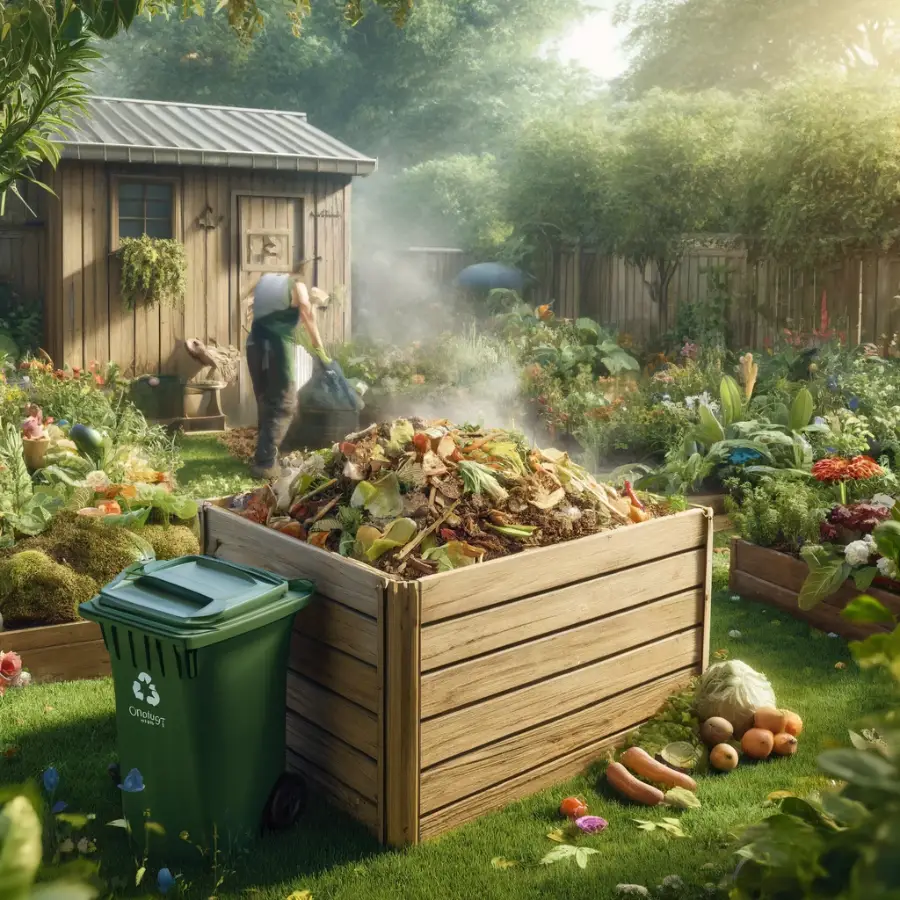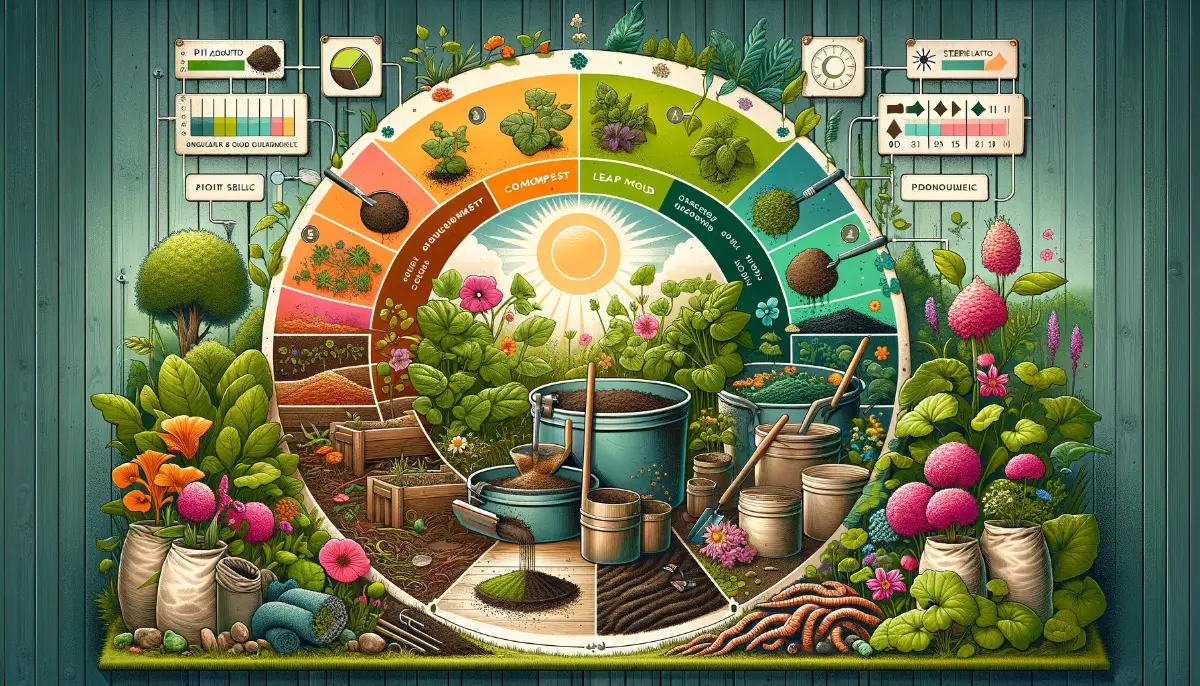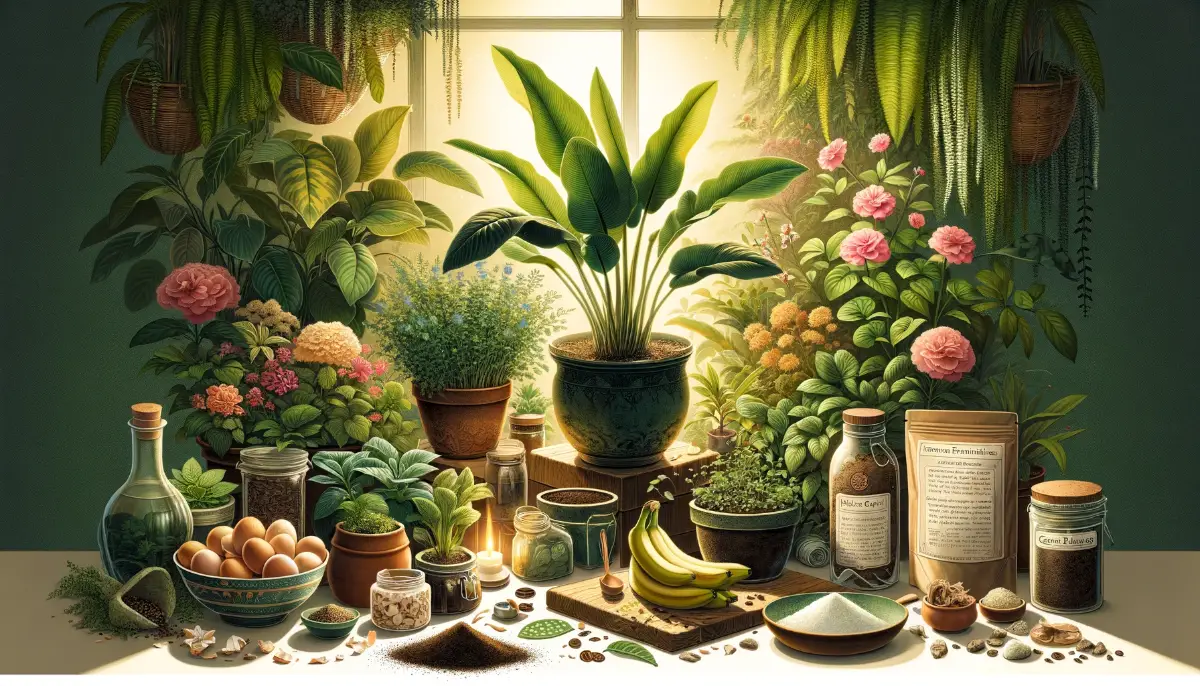Composting is a natural process that transforms organic waste materials into nutrient-rich soil amendments, commonly referred to as “black gold”. This process leverages the decomposition capabilities of microorganisms, such as bacteria and fungi, to break down kitchen scraps, yard waste, and other organic matter into a valuable resource for gardeners and farmers.
Using compost in your garden offers numerous benefits. It enriches the soil with essential nutrients, improves soil structure and water retention, and promotes healthy root development. Additionally, composting fosters a sustainable and eco-friendly approach to gardening, encouraging a circular economy where waste is minimized, and natural resources are conserved.
How Composting Works: Guide for Beginners
Composting is like nature’s way of recycling. It takes the things we often throw away—like kitchen scraps and yard waste—and turns them into something incredibly useful for our gardens. Here’s a simple breakdown of how it works:
The Basics of Composting
Decomposition Process
- Composting involves breaking down organic materials (things that were once alive) into smaller, simpler parts.
- This process is done by tiny living creatures like bacteria, fungi, worms, and insects.
Types of Materials
- Green Materials: These are wet and rich in nitrogen. Examples include vegetable scraps, coffee grounds, and fresh grass clippings.
- Brown Materials: These are dry and rich in carbon. Examples include dead leaves, straw, cardboard, and paper.
Key Elements for Composting
- Air: Compost needs oxygen to help the microorganisms do their work.
- Water: A little moisture helps break down materials faster, but too much water can slow things down.
- Balance: A good mix of green and brown materials helps create the right conditions for composting.
Steps to Start Composting
Choose a Composting Method
- Compost Pile: A simple heap of compost materials in your garden.
- Compost Bin or Tumbler: Containers designed to hold compost and make it easier to manage.
- Vermicomposting: Using worms to break down food waste, often done in a bin.
Build Your Compost Pile
- Start with a layer of coarse materials like twigs or straw to help with air flow.
- Alternate layers of green and brown materials. Try to keep the layers thin, about 2-4 inches each.
- Add a little water to keep the pile moist, but not soggy.
Maintaining Your Compost
Proper maintenance is crucial to ensure your compost pile decomposes efficiently and produces high-quality compost. Here’s how to maintain your compost:
Turning the Pile
Frequency: Turn your compost pile every 1-2 weeks. Frequent turning helps aerate the pile and speeds up the decomposition process.
Technique: Use a garden fork or shovel. Move the outer, less decomposed materials to the center. Ensure all parts of the pile get aerated and mixed.
Monitoring Temperature
Optimal Range: The ideal temperature for composting is between 130°F and 160°F (54°C to 71°C).
Tools: Use a compost thermometer to monitor the internal temperature of the pile.
Adjusting Conditions:
- If the pile is too cool: Add more green materials (nitrogen-rich) and turn the pile more frequently to boost microbial activity.
- If the pile is too hot: Add more brown materials (carbon-rich) and turn the pile less frequently to cool it down.
Managing Moisture Levels
Ideal Moisture: The compost should be as moist as a wrung-out sponge.
Checking Moisture: Squeeze a handful of compost; it should feel damp but not drip water.
Adjusting Moisture:
- If too dry: Add water while turning the pile to distribute moisture evenly.
- If too wet: Add more brown materials like straw, cardboard, or dry leaves, and turn the pile to improve aeration.
Troubleshooting Common Problems
Odors:
- Cause: Too much green material, insufficient aeration, or excess moisture.
- Solution: Add brown materials, turn the pile more frequently, and ensure proper drainage.
Pests:
- Cause: Presence of food scraps, especially meat or dairy, in the compost.
- Solution: Avoid adding meat, dairy, and oily foods. Ensure food scraps are buried in the center of the pile.
Slow Decomposition:
- Cause: Imbalance in green and brown materials, inadequate aeration, or insufficient moisture.
- Solution: Adjust the green-to-brown ratio, ensure the pile is turned regularly, and maintain proper moisture levels.
Managing Particle Size
- Chop Materials: Break down larger pieces into smaller ones to increase the surface area for microbes to work on.
- Even Distribution: Spread out materials evenly when adding them to the pile to avoid clumps that can slow decomposition.
Adding New Materials
- Layering: Alternate layers of green and brown materials to maintain balance.
- Burying Food Scraps: Bury kitchen scraps under a layer of brown materials to deter pests and reduce odors.
Curing the Compost
- Allow to Sit: Once the active composting phase is done and the materials look dark and crumbly, let the compost cure for a few weeks.
- Benefits: Curing stabilizes the compost, making it safer and more beneficial for plants.
After a few months, your compost will look dark and crumbly, like rich soil. There shouldn’t be any recognizable food scraps, and it should smell earthy.
How to Use Compost in Your Garden
Compost is a gardener’s best friend, providing a natural way to improve soil health and plant growth. Here’s how you can effectively use compost in your garden:
Determining When Compost is Ready
- Visual and Physical Signs: Finished compost looks dark, crumbly, and has a pleasant, earthy smell. It should no longer have identifiable food scraps or plant material.
- The Curing Process: Let the compost sit for a few weeks after the active decomposition phase to stabilize and mature. This helps reduce the risk of introducing pathogens or weed seeds into your garden.
Applying Compost
- As a Soil Amendment
Preparation: Before planting, spread a 2-4 inch layer of compost over your garden beds.
Mixing: Work the compost into the top 6-12 inches of soil. This enhances soil structure, improves drainage, and increases nutrient content.
- Mulching
Application: Spread a 2-3 inch layer of compost around the base of plants, keeping it a few inches away from the stems to prevent rot.
Benefits: Mulching with compost helps retain soil moisture, suppress weeds, and regulate soil temperature.
- Top Dressing
Process: Sprinkle a thin layer of compost on the soil surface around plants during the growing season.
Purpose: This method slowly releases nutrients into the soil, giving plants a continuous supply.
- Making Compost Tea
Recipe: Steep a shovel full of compost in a bucket of water for a few days, stirring occasionally.
Application: Strain the mixture and use the liquid to water your plants. Compost tea provides a quick nutrient boost and can also be used as a foliar spray.
Benefits of Using Compost
Improved Soil Structure: Compost adds organic matter to the soil, improving its texture, aeration, and ability to retain moisture.
Enhanced Nutrient Content: Compost provides a balanced mix of essential nutrients that are slowly released over time, reducing the need for chemical fertilizers.
Increased Water Retention: Compost helps sandy soils retain moisture and clay soils drain better, creating a more balanced environment for plant roots.
Promotes Healthy Microbial Activity: Compost encourages the growth of beneficial microorganisms that help break down organic matter and make nutrients more available to plants.
How to Use Compost for Your Plants: Amounts and Timing
Using compost correctly can significantly benefit your plants by improving soil health and providing essential nutrients. Here’s a guide on how much compost to use and when to apply it for various types of plants:
Houseplants and Herbs
- Amount: Mix 1 part compost with 2-3 parts potting soil.
- When: Repotting is the best time to incorporate compost. You can also top-dress houseplants with a thin layer (about 1/2 inch) of compost every 6 months.
Vegetable Gardens
- Amount: Apply 2-4 inches of compost to the garden bed and mix it into the top 6-12 inches of soil before planting.
- When: Apply compost in early spring before planting. You can also side-dress plants with compost mid-season by placing it around the base of the plants.
Flower Beds
- Amount: Mix 1-3 inches of compost into the top 6-8 inches of soil.
- When: Add compost in early spring before planting annuals. For perennial beds, apply compost in spring and fall.
Fruit Plants
- Amount: Incorporate 2-4 inches of compost into the soil at planting time. For established plants, use 1-2 inches of compost as a mulch around the base of the plants.
- When: Apply compost in early spring and again in late fall for established plants.
Shrubs and Trees
- Amount: Mix 2-4 inches of compost into the planting hole when planting shrubs and trees. For existing plants, use 1-2 inches of compost as a mulch around the drip line (the outer edge of the plant’s canopy).
- When: Apply compost in early spring and fall.
Lawns
- Amount: Spread a thin layer (about 1/4 to 1/2 inch) of compost over the lawn.
- When: Top-dress the lawn with compost in early spring or fall when the grass is actively growing.
Timing Tips
- Early Spring: Before planting, incorporate compost to prepare the soil and provide a nutrient-rich environment for seedlings.
- Late Spring to Mid-Season: Side-dress plants to provide an extra nutrient boost during the growing season.
- Fall: Apply compost to beds and around perennials to prepare the soil for the next growing season and protect plants over winter.
FAQs About Composting
What can I compost?
You can compost a variety of organic materials, including fruit and vegetable scraps, coffee grounds, tea bags, eggshells, grass clippings, leaves, straw, paper, and cardboard. Avoid composting meat, dairy, oily foods, and diseased plants.
How long does it take for compost to be ready?
The composting process can take anywhere from a few months to a year, depending on factors like the materials used, the size of the pieces, the frequency of turning, and environmental conditions. Regular turning and maintaining proper moisture and temperature can speed up the process.
Does composting smell bad?
A well-maintained compost pile should have an earthy smell. If it smells rotten or foul, it usually means there is too much green material (nitrogen) or the pile is too wet. Adding more brown materials (carbon) and turning the pile can help eliminate odors.
Can I compost in winter?
Yes, you can compost in winter. Although the decomposition process slows down in cold weather, it doesn’t stop completely. Insulating your compost pile with straw or leaves and turning it less frequently can help maintain some activity. Adding materials during winter ensures a faster start in spring.
Do I need a compost bin?
While a compost bin isn’t necessary, it can help contain the compost materials, keep the pile tidy, and deter pests. You can also use a compost tumbler for easier turning or build a simple compost pile in a corner of your yard.
How do I know when my compost is ready to use?
Finished compost is dark, crumbly, and has an earthy smell. It should no longer contain recognizable food scraps or plant material. If in doubt, let it cure for a few weeks before using it in your garden.
Can I compost weeds?
You can compost weeds, but be cautious. If your compost pile doesn’t get hot enough (130°F to 160°F) to kill weed seeds and roots, they might survive and spread when you use the compost. To be safe, avoid composting weeds with seeds or persistent roots.
How often should I turn my compost pile?
Turning your compost pile every 1-2 weeks is ideal for providing oxygen and speeding up the decomposition process. If you notice the pile isn’t breaking down or has a strong odor, turning it more frequently can help.
What is the ideal ratio of green to brown materials?
A balanced compost pile typically has a ratio of about 2-3 parts brown materials (carbon-rich) to 1 part green materials (nitrogen-rich). This ratio helps maintain optimal conditions for decomposition and prevents odors.
Can I use compost for all types of plants?
Yes, compost is beneficial for most plants, including vegetables, flowers, shrubs, trees, and lawns. It improves soil structure, provides essential nutrients, and enhances water retention. However, for specific plants with unique soil requirements, like certain acid-loving plants, you may need to adjust the compost or supplement with other amendments.









